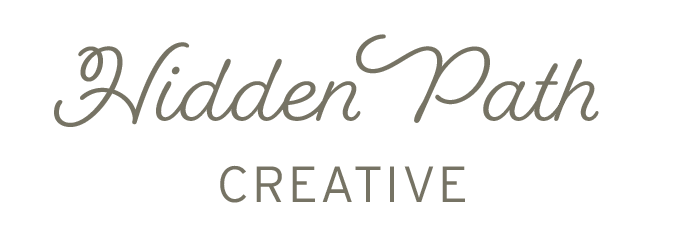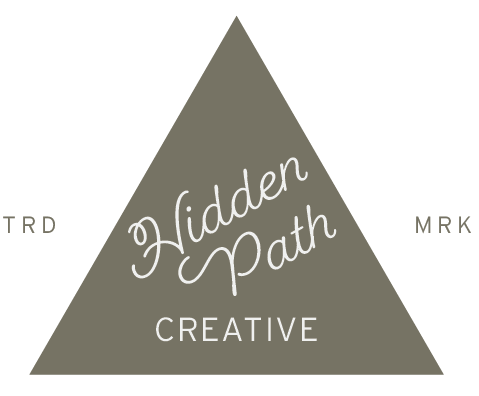How to Design Packaging for Any Product Business
Do you have a product-based business, or are you thinking of starting one? You probably know that all products need some packaging.
First and foremost, packaging protects your products while presenting them to customers. The most effective packaging persuades shoppers to choose your product! It combines marketing, structural design, storytelling, and graphic design.
The process of creating packaging can be a little daunting. So let’s break it down. These are the key steps in any packaging design project.
Define Your Product Goals
Packaging Design for Super Trellis by Hidden Path Creative
Having clear goals is crucial for the success of any business. They help you stay focused and determine the direction of your business. Here are some factors to consider when crafting the goals for a product-based business.
When creating a product, it's essential to consider your target audience and their needs. This understanding can help you tailor your product to meet their expectations and increase your chances of attracting new customers. By gathering data on your audience, such as their demographics, preferences, and pain points, you can create a product that resonates with them and stands out in the marketplace.
Another important factor in creating a successful product is identifying your unique selling proposition (USP). Your USP sets your product apart from the competition and can help you increase your price point or value perception. It's important to take the time to identify your USP and communicate it clearly to your audience to differentiate yourself from competitors.
By considering these factors, you can define your product business goals relevant to where you are in business and help you launch a successful product that is shareable and solves an existing problem.
Choose Your Packaging Type
Packaging serves a variety of functions for a product-based business. Not only does packaging protect a product, but it also is a key marketing asset. It’s important to consider all the functions a package will fulfill when choosing the packaging container for your product.
Regarding packaging, it’s essential to consider what other similar products are using. This will help you stay competitive and relevant in your industry. It is best to consider what protection your product needs during transportation and storage, as this will impact your packaging choices.
When choosing the packaging type, looking at where the product will be sold and what kind of story you want to tell is essential. For brick-and-mortar stores, try to maximize front panel real estate to make an impact on the shelves. For eCommerce, packaging can still be a selling point when used in photography. Look at everything from the type of container to the size and shape to tell your product story and showcase product benefits. At the end of the day, packaging should protect the product while attracting and connecting with shoppers.
Choose Your Packaging Partners
When it comes to creating packaging for your product, there are several key players that you’ll need to work with. One of the most important is your printer and supplier. It’s important to look for a printer with experience with the type of packaging you’ll be using and one that can produce high-quality prints at a reasonable price. By working with a good printer, you can ensure that your packaging looks professional and eye-catching.
A good designer plays a crucial role in creating packaging that stands out on the shelf and accurately represents your brand. When looking for a designer, finding someone with experience in packaging design and a portfolio of work that aligns with your vision is essential. Working with a designer ensures your packaging looks great and accurately reflects your brand’s values and personality.
Finally, the text on your packaging will work hand-in-hand with the design. That’s where a skilled copywriter comes in. A copywriter can help you craft compelling copy that communicates benefits drawing shoppers in. When looking for a copywriter, it’s crucial to find someone with experience writing for packaging that can create copy that resonates with your target audience.
Choosing the right packaging partners ensures your packaging looks great, functions well, and effectively communicates with your customers.
Plan Your Product Messaging
Packaging Design for August + Monroe by Hidden Path Creative
Before you start designing visuals for your packaging, it’s important to know what the design needs to communicate. Identify the problem your product solves for your customers and how it can improve their lives or help them achieve their goals. By emphasizing this key benefit in your messaging, you can effectively communicate the value of your product to potential customers.
To differentiate your product from competitors, highlight its most important features. Focus on qualities that resonate with your target audience and demonstrate how they benefit customers. You want customers to feel like they have made the best choice when they purchase your product.
Sharing your product’s origin or a customer success story can help build an emotional connection with your audience. A compelling story can help your product stand out and resonate with potential customers, increasing sales and customer loyalty.
Depending on your industry and product, you may need to include regulatory information in your messaging. Researching and complying with relevant regulations and communicating any necessary information to your customers are vital to ensure transparency and trust in your brand.
Create a Design That Shows and Tells
Packaging design is crucial in attracting customers and ensuring your product stands apart from the competition. It is the first point of contact between your product and the customer. And with the average attention span of customers dwindling to just 8 seconds, brands must go the extra mile to grab their attention. It is, therefore, essential to create packaging that is not only visually appealing but also communicates the key benefits of your product.
Start the design with the primary display panel before extending the design around the rest of the package. When designing the primary display panel, remember that it should be visually striking and communicate the product’s key features effectively. The messaging should be clear and concise, and the design should be attention-grabbing enough to stand out among other products in-store or online.
For online retailers like Amazon, the primary display panel is often the first thing shoppers see, so making a great first impression is crucial. Including a photo or illustration showcasing the product’s key benefit can help shoppers visually scan and immediately understand the product.
In addition to the design, ensure that the text on the primary display panel is easy to read and conveys the message. Choosing the right font and color scheme can make a big difference in readability and the overall impact of the design. Remember, the primary display panel is vital in grabbing the customer’s attention and leaving a lasting impression, so make it count!
Set up Artwork for Print
When preparing artwork for print, following specific guidelines will ensure the final product meets your expectations. Using a dieline template is one of these guidelines. Setting up the artwork on the dieline shows the printer where the artwork falls on the packaging. You must ensure that your artwork fits within the dieline and that all elements are within the safe zone.
You’ll also want to ensure your design is in the CMYK color mode. CMYK is the standard color mode for print, while RGB is best for digital designs. RGB has a wider selection of colors and can look more vibrant than CMYK. At Hidden Path Creative, we like to start in CMYK mode and use printed color references like a Pantone bridge fan, so there aren’t any surprises at print time.
Finally, you need to know the specifications when setting up artwork for print. This includes the size, paper stock, and any special finishing options such as spot UV or foil stamping. You should communicate these specifications to your designer or printer to ensure the final print run meets your expectations. If you’re building the files yourself, make a separate, non-printing layer with notes for the printer.
Review Samples
Don’t be tempted to skip ordering a sample of your packaging, especially if you are new to packaging or trying out a new design. Receiving and reviewing a sample can save you from costly mistakes in the long run.
It’s important to note that the timeframe for receiving a packaging sample can vary depending on the packaging type and supplier. If you are ordering from China or India to save on costs, it may take up to 4 weeks to receive your sample due to production time and shipping. However, some suppliers offer quicker turnaround times by hand-cutting and printing samples, although these may not wholly represent the final product.
Allowing 2-4 weeks for a sample to arrive with your printed artwork is a good rule of thumb. This timeframe will allow you to review the sample thoroughly and make any necessary adjustments before placing a larger order. Ultimately, taking the time to order and review a sample will ensure that your final product meets your expectations and requirements.
Order Packaging Production
Packaging Design for Lamarre Soap Co. by Hidden Path Creative
Based on various factors, packaging production can take anywhere from a few days to a few months. Ask your suppliers about their lead upfront to plan your launch timeline. Some of these factors include the type of packaging material, the complexity of the design, and the quantity of packaging needed.
Custom packaging designs may take longer to produce than standard designs. And, if you require any special finishes or coatings, this can further extend the production time. The type of packaging material selected may also impact the production time. Finally, shipping and logistics can also influence how long it takes for the packaging to arrive. Ask ahead of time if any of your packaging choices will increase the production time.
By asking your suppliers about their lead time upfront, you can better plan your launch timeline and ensure your packaging arrives in time for your product launch. It’s always a good idea to build in some extra time to account for any unexpected delays.
You will be so excited and proud when your product arrives in your branded packaging! Planning the process with the end in mind will ensure you get your product to market on time with packaging that stands out and attracts your ideal customer to buy.
Ready To Get Started Designing Your Packaging?
The process of planning, designing, and producing your product packaging can take anywhere from three months to six months or more. With so many moving pieces and details to keep track of, don’t miss a step on your next product package. The Ultimate Packaging Checklist breaks the process down into the key steps outlined in the article, with itemized checklists you can use again and again. It’s free and you can download it now.




